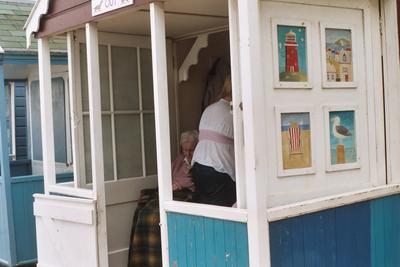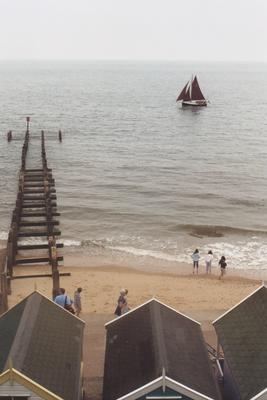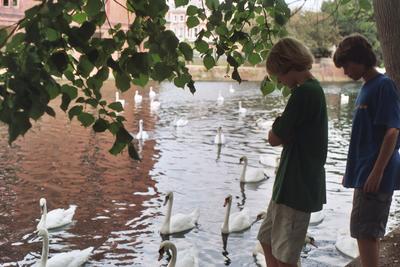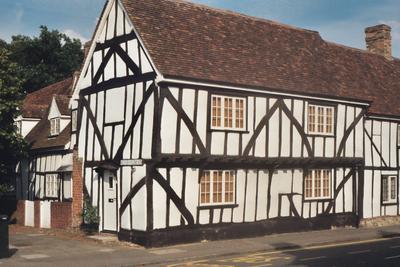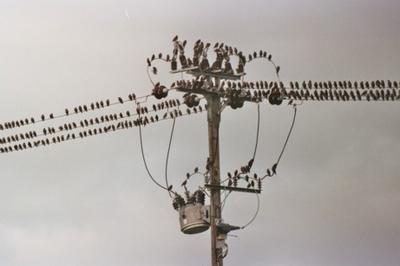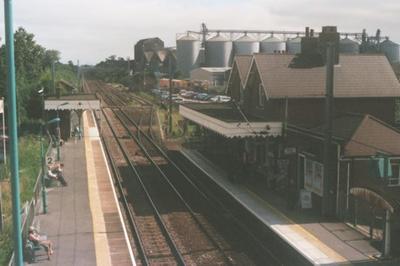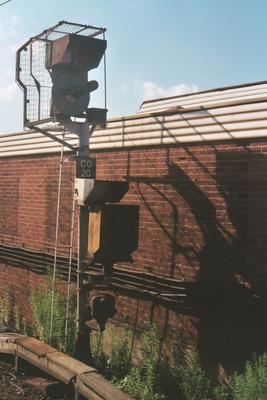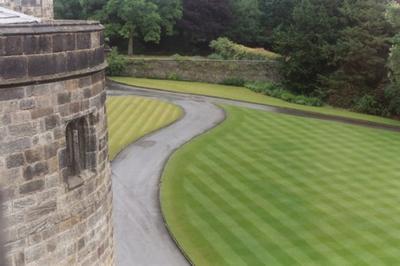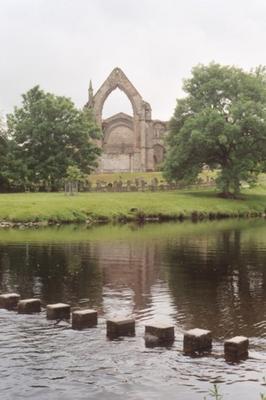Last Day in London
Having slept in and thereby missing breakfast, I brought the package of new books (mostly poetry) which I'd cobbled together to the post office down Marchmont Street, thus freeing up considerable space and weight in my luggage. I woke the boys and we grabbed some terrible stale pastries in the enticingly named Valencia Cafeteria en route to Goodge Street; when we got off we wandered confusedly a bit but wound up where we were supposed to, at the London Transport Museum in Covent Garden.
The boys quite enjoyed the collection of colorful antique buses, trams, trains, and subway cars. Then perishing from hunger we had a very satisfying if simple Chinese lunch at a place called Loon Fung, overlooking (through pigeon-proof netting) an open-air flea market where folks were selling an amazing array of junk; had a nice chat with the woman who ran the place, who'd lived in Vancouver: she much preferred London (who could blame her?) -- though I quite like BC myself.
Now it was time for some real culture; we started for St. Paul's. But the Piccadilly line (which we'd arrived on) was now closed due to security issues. Fortunately it wasn't far to walk to the Holborn station, which, as with all the others, had a great assortment of talented buskers -- guitarists, banjoists, flautists… We enjoyed the infrequent but cooling blasts of air at the tunnel junctions.
At the cathedral, after a quick look around the main floor with its gilding and statuary, the boys sped up the ancient grafitti'd spiral stairs, illuminated only by the occasional slitted window, counting as they went; halfway up the 537 at the inner "Whispering Gallery" they edged around the vast pit looking at the tiled floor below, and then up we went to the first outer observation area, the "Stone Gallery," and beyond, up increasingly narrow and spiraling steps to the "Golden Gallery," the cupola at the top of the dome. Here a number of hardy souls stood in the very limited viewing area, looking out at the hazy London morning. Ben claimed to be overcome with claustrophobia due to the crowd (rather than acrophobia), so went back inside shortly, but Nick and I hung out for several more minutes enjoying the breeze.
Finally we wound back down all the way to the refreshingly cool and dim Crypt, now occupied by a gift shop and café as well as by tombs of British luminaries from art, music, literature, the military, and politics -- Blake, Turner, Nelson, etc. It's mind-boggling to drink a beer (or eat ice cream) at roughly the spot where King Ethelred's bones once lay, before the Great Fire.
After this cultural tour de force, which went largely ignored by the kids, who were having a bit of a tiff, I spared them the Tate Modern gallery. Instead we took the tube again to Oxford Circus, transferred to the Bakerloo line, and got off at Regent's Park, which I wanted to see, partly because it figures in one of my favorite Elvis Costello songs, "London's Brilliant Parade." We wandered through the park along the water with its swans and herons, and through a Japanese garden, and then circled back toward home through an upscale residential district; it was a very long way to the nearest tube stop (not retracing our steps, which would have been too easy!) -- during which it began to rain! But at last we tubed back to Goodge Street and walked (sigh) the ten blocks or so to the hotel for a well deserved rest and cooldown before dinner, which we took at La Bargiana, just down the street from the Avalon, where the service, if slow, was friendly.
The next day we undertook the arduous trip back to SeaTac airport.





